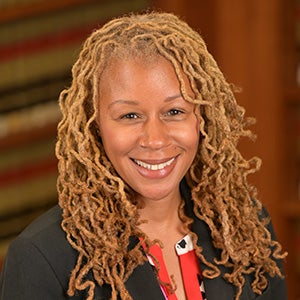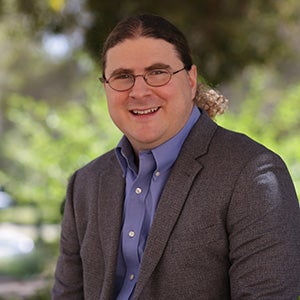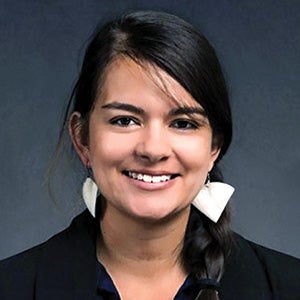Read and Watch: UCLA Law Experts Weigh in on Major Decisions at the Supreme Court
UCLA Law Magazine | Fall 2023 | Volume 46
This year, the Supreme Court of the United States delivered major decisions on affirmative action, voting rights, free speech and Indigenous sovereignty, among other issues.
UCLA School of Law experts stepped in to break down the impact of the term in a variety of places: “Whither the Court: The Allan C. Lebow Annual Supreme Court Review” program, a webinar titled “From the Frontlines: The Supreme Court Rulings on Affirmative Action, LGBTQ Rights, and Student Debt,” public writings and even social media videos.
Here are some of their soundbites:
Affirmative Action
The court’s landmark decision in Students for Fair Admissions, Inc. v. University of North Carolina and Students for Fair Admissions, Inc. v. President & Fellows of Harvard College severely limited, if not effectively ended, the use of affirmative action in college admissions. With a six-justice majority, the court ruled that the admissions programs used by those universities violate the Constitution’s equal protection clause, which bars racial discrimination by government entities.
“The Supreme Court effectively overruled 45 years of precedent and held that diversity was no longer a ‘compelling interest’ in higher education. Still, stopping race discrimination – happening right now in our own institutions – has always been a compelling interest. And the court has not yet grappled seriously with social science evidence that connects racial representation to building an equal learning environment.”
 Jerry Kang, distinguished professor of law and (by courtesy) Asian American studies; founding vice chancellor for equity, diversity and inclusion
Jerry Kang, distinguished professor of law and (by courtesy) Asian American studies; founding vice chancellor for equity, diversity and inclusion
Read: “Ending affirmative action does nothing to end discrimination against Asian Americans”.
Watch: Professor Kang breaks down the decision in 90 seconds.
“The court does not say universities may never consider race. What it says is an applicant can write in an essay how race has impacted their lives. Those experiences must be individual experiences and that colleges can still consider it.”
“Most of the ways we fund our public schools leave children of color with far fewer resources to compete on notions of merit. What colleges and universities can do is to implement very strong pipeline programs, even in elementary schools, so that students can compete when it comes to selective college admissions. And we should be fighting against draconian laws restricting what books can be taught; students need to see themselves in the curriculum.”
 LaToya Baldwin Clark, professor of law and faculty director of the Critical Race Studies program
LaToya Baldwin Clark, professor of law and faculty director of the Critical Race Studies program
Read: Baldwin Clark is quoted in Justice Sotomayor’s dissent.
Elections and voting rights
In Allen v. Milligan, Chief Justice John Roberts and four other justices decided to uphold the voting rights act, agreeing that Alabama’s racially discriminatory congressional maps must be redrawn.
“The state of Alabama thought it had the votes on the Supreme Court to eviscerate the existing Voting Rights Act doctrine. Instead, SCOTUS upheld the precedent, leaving doctrine intact. But there is an asterisk: the court did allow the discriminatory maps to be used in the election that elected the current Congress. We’ll see what happens in future congressional decisions.”
 Joey Fishkin, professor of law
Joey Fishkin, professor of law
Watch: “Whither the Court: The Allan C. Lebow Annual Supreme Court Review” program.
In Moore v. Harper, the court rejected the most extreme version of the “independent state legislature theory” that could have upended U.S. elections in a 6-3 vote. But the court preserved a role for itself in reviewing state court decisions applying state election laws in presidential and congressional elections.
“The legislators advanced an extreme theory, which, thankfully, Roberts rejected in his opinion for the court. The extreme theory was that state legislatures can pass whatever election rules they want for federal elections, and state courts cannot constrain them, even when they violated their own state constitutions. The court made clear that legislatures
do not have this free-floating power, and that one must understand the legislature’s power within the ordinary system of state government, including judicial review.”
 Richard L. Hasen, professor of law and political science and director of UCLA Law’s Safeguarding Democracy Project
Richard L. Hasen, professor of law and political science and director of UCLA Law’s Safeguarding Democracy Project
First Amendment
In 303 Creative LLC v. Elenis, the court found that the First Amendment’s free speech protections allow a website designer in Colorado to refuse to serve same-sex couples. Colorado’s Public Accommodations Act prohibits discrimination in public accommodations based on sexual orientation and gender identity.
“The Supreme Court’s decision establishes an exemption to anti-discrimination laws. If a service is ‘expressive’—which the court finds a wedding website to be—a business may be able to deny that service in some circumstances, even if it harms LGBT people or other protected groups.”
 Elana Redfield, federal policy director at the Williams Institute
Elana Redfield, federal policy director at the Williams Institute
Read: Williams Institute’s amicus brief on the case.
Environment
In Sackett v. EPA, the court ruled that as many as half of the 118 million acres of wetlands in the U.S. are no longer protected by the Clean Water Act.
“This will make it much harder for the federal government to protect water quality—and surely this is the court’s goal. The opinion is clear in its aim to shift more power to the 50 states to control water pollution, with the likely effect of creating ‘red state’ and ‘blue state’ approaches to water protection.
 Cara Horowitz, Andrew Sabin Family Foundation Executive Director of the Emmett Institute on Climate Change and the Environment and director of the Frank G. Wells Environmental Law Clinic
Cara Horowitz, Andrew Sabin Family Foundation Executive Director of the Emmett Institute on Climate Change and the Environment and director of the Frank G. Wells Environmental Law Clinic
Read: Horowitz’s Q&A in Legal Planet.
Native American rights
In Haaland v. Brackeen, the court delivered a landmark victory for tribal sovereignty. In a 7-2 decision by Justice Amy Coney Barrett, the court rejected the constitutional challenges to the Indian Child Welfare Act (ICWA) — some on the merits and others for lack of standing.
“Indian country has experienced a pretty varied record at the Supreme Court. Generally speaking, these cases do not have a welcome reception as the judges don’t have a background in federal Indian law. Of the 574 recognized tribes, about 550 wrote a brief in support of the Indian Child Welfare Act. We were expecting the worst. It could have impacted other huge areas of federal law. But the court upheld it. The decision was celebrated in Indian country.”
 Lauren van Schilfgaarde (Cochiti Pueblo), assistant professor of law
Lauren van Schilfgaarde (Cochiti Pueblo), assistant professor of law
Read: Professors Angela Riley (Citizen Potawatomi Nation) and Lauren van Schilfgaarde offer their takes.
Watch: Unpacking Haaland v. Brackeen.
Want more SCOTUS insights?
Watch: “Whither the Court: The Allan C. Lebow Annual Supreme Court Review” program.